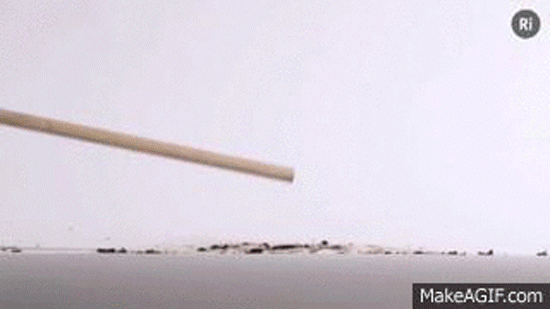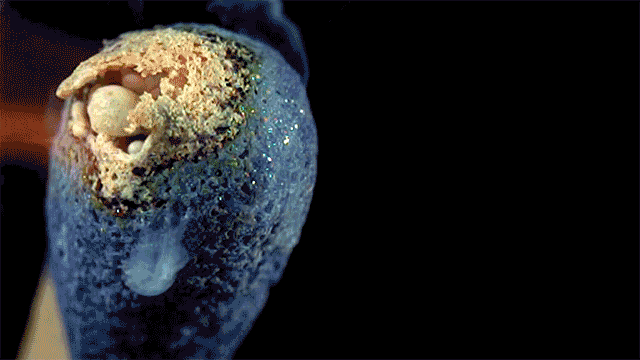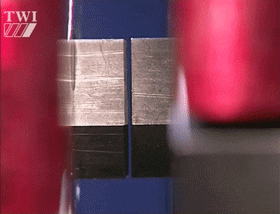Recreate the chemical reactions in books through realistic beams
The following animation experiments will help you understand and love this chemistry better.
If you are a chemical lover, you always want to find out how interesting chemical reactions are when combining 2-3 chemicals together.
Doing good experiments will make you not only learn more knowledge but also love science more.
Note: The experiments below may be harmful so you should not arbitrarily perform them at home.
1. Nitrogen triiodide explodes only with a light flake

Nitrogen triiodide (chemical formula: NI3) is an extremely sensitive inorganic compound. Due to the pyramidal structure with three large iodine atoms close to each other with nitrogen atoms, just any small stimulus, even a slight wind - Nitrogen Triiodide will explode immediately.
2. Match matchstick when swiped

Friction matches are built in a way that dips matchsticks into phosphoric solutions. Then, dip the matchhead into the molten beeswax and then immerse it in the mixture containing the adhesive, lead oxide and phosphorus.
The rubbing causes phosphorus and lead compounds to explode, causing the match to spread fire. The fire spread to the wax and then the wooden stick of the match.
3. Consolidate metal by friction force

Thanks to the frictional force, this kind of material will produce enough heat to ignite, melting the metal rod.
4. Mix isocyanate and polyol

Mixing isocyanate and polyol will produce a product called polyurethanes - also called PU. This is a kind of material that has many features and applications superior to conventional rubber.
5. Electric current runs through a pencil

Lead is a good conductive material but wood does not. When connecting the power to the 2 pencil ends, the heat generated will make the pencil case quickly . 'turn into ash'.
6. Melting metal with electromagnet

Copper coils are connected to alternating current, becoming a powerful electromagnet. The metal piece will be balanced by the magnetic field, and the vortex current (Foucalt electric current) generated by the magnetic field will run into the piece of metal. At this time, the resistance of the metal will generate heat, enough to melt it.
7. Liquid Nitrogen and . 1,500 ping pong balls

Liquid nitrogen under normal conditions will quickly convert into gaseous form, so when placed in a closed environment will quickly explode. The closed environment here is made up of . 1,500 table tennis balls.
8. Steel wool when burning

Steel wool, also known as steel wool, is a very popular game in many countries around the world. The material that makes up steel wool is thin rolled steel, cut into small fibers. Steel wool when burning creates very beautiful sparks.
9. CD set in the microwave

When inserting a CD into the microwave, the inner aluminum layer acts as a microwave suction antenna, making the CD burn beautifully and fanciful.
10. High voltage power runs through the coin

Resistors produce heat that causes the coin to melt.
- A close look at chemical reactions
- Watching beautiful chemical reactions with 4K resolution, you will want to learn Chemistry immediately
- Balance chemical reaction with EBAS
- Chemical reaction to create more flexible material
- Video: Decorate beautiful ceramics with chemical reactions
- Artificial leaves use sunlight to create drugs
- The risk of serious allergies from cosmetics
- People are happy to talk about themselves
- Listen to the exciting ASMR sounds of experiments and chemical reactions
- Learn the glowing mechanism of fireflies
- What produces thought?
- Sensor detects explosives in the ground
 'Fine laughs' - Scary and painful torture in ancient times
'Fine laughs' - Scary and painful torture in ancient times The sequence of numbers 142857 of the Egyptian pyramids is known as the strangest number in the world - Why?
The sequence of numbers 142857 of the Egyptian pyramids is known as the strangest number in the world - Why? History of the iron
History of the iron What is alum?
What is alum?